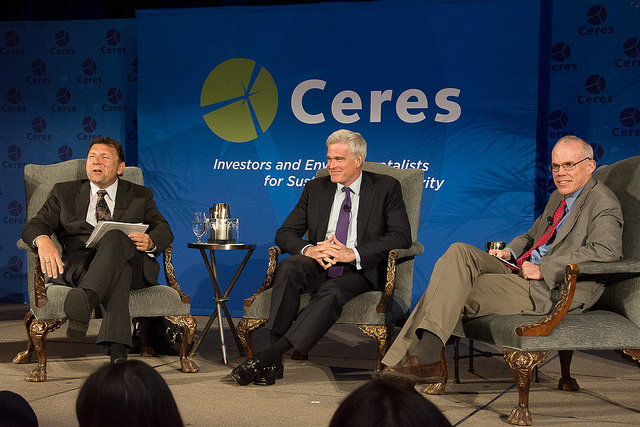Dec 13
20150
350.org / 1Sky, Avaaz, Foundations, Non-Profit Industrial Complex
350.org Avaaz Bank of America Breakthrough Energy Coalition Ceres Citigroup COP21 Earth to Paris Goldman Sachs. Havas JP Morgan Chase Morgan Stanley New Economy NoVo privatization Social Engineering Tides United Nations Wall Street WBCSD
COP21: Privatization Strategy
Center for World of Indigenous Studies
December 13, 2015
by Jay Taber
World Business Council for Sustainable Development is part of a Wall Street strategy to dislodge the United Nations Center on Transnational Corporations, and prevent enforceable rules governing the operations of multinational corporations.
A partner of WBCSD is Ceres (Coalition for Environmentally Responsible Economies), whose funders are associated with Goldman Sachs, JP Morgan Chase, Citigroup, Morgan Stanley and Bank of America. Ceres and 350 are funded in part by Tides, whose largest donor is NoVo–Warren Buffet’s private foundation.
Today, WBCSD launched another initiative to privatize ecosystems — Natural Infrastructure for Business — and to capitalize on the Breakthrough Energy Coalition boondoggle hyped by the financial elite at COP21.
The privatization of public process and policy — which led to economic collapse in the US, and bank bailouts from the U.S. Treasury that eviscerated the general welfare — is now being enacted at the UN.
The Clean Energy Ponzi Scheme and the ‘new economy’ — false hope marketed for the financial elite by Havas, Avaaz and 350 — now has its sights set on privatizing the planet.
[Jay Thomas Taber (O’Neal) derives from the most prominent tribe in Irish history, nEoghan Ua Niall, the chief family in Northern Ireland between the 4th and the 17th centuries. Jay’s ancestors were some of the last great leaders of Gaelic Ireland. His grandmother’s grandfather’s grandfather emigrated from Belfast to South Carolina in 1768. Jay is an associate scholar of the Center for World Indigenous Studies, a correspondent to Forum for Global Exchange, and a contributing editor of Fourth World Journal. Since 1994, he has served as communications director at Public Good Project, a volunteer network of researchers, analysts and activists engaged in defending democracy. As a consultant, he has assisted indigenous peoples in the European Court of Human Rights and at the United Nations. Email: tbarj [at] yahoo.com Website: www.jaytaber.com]


















